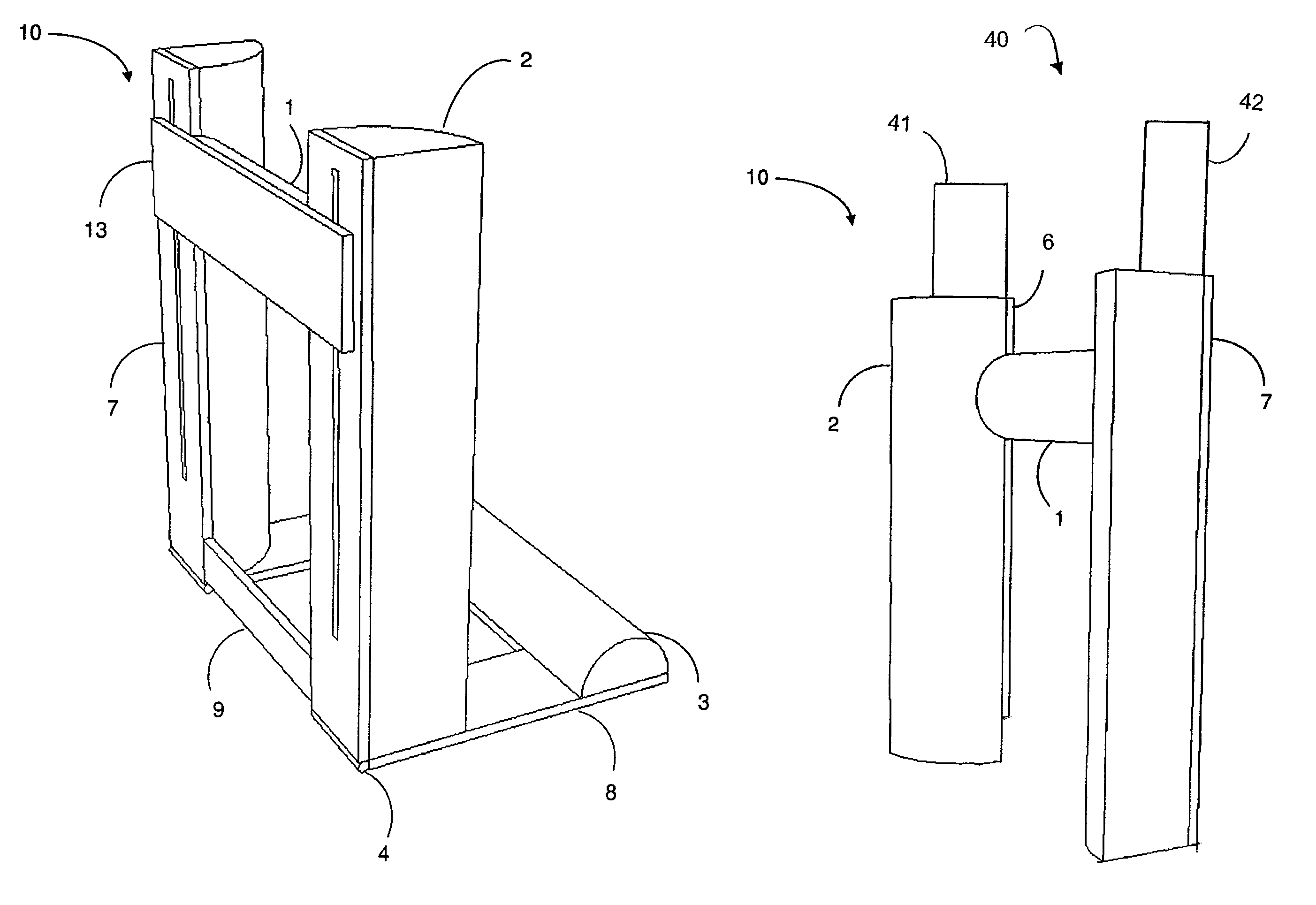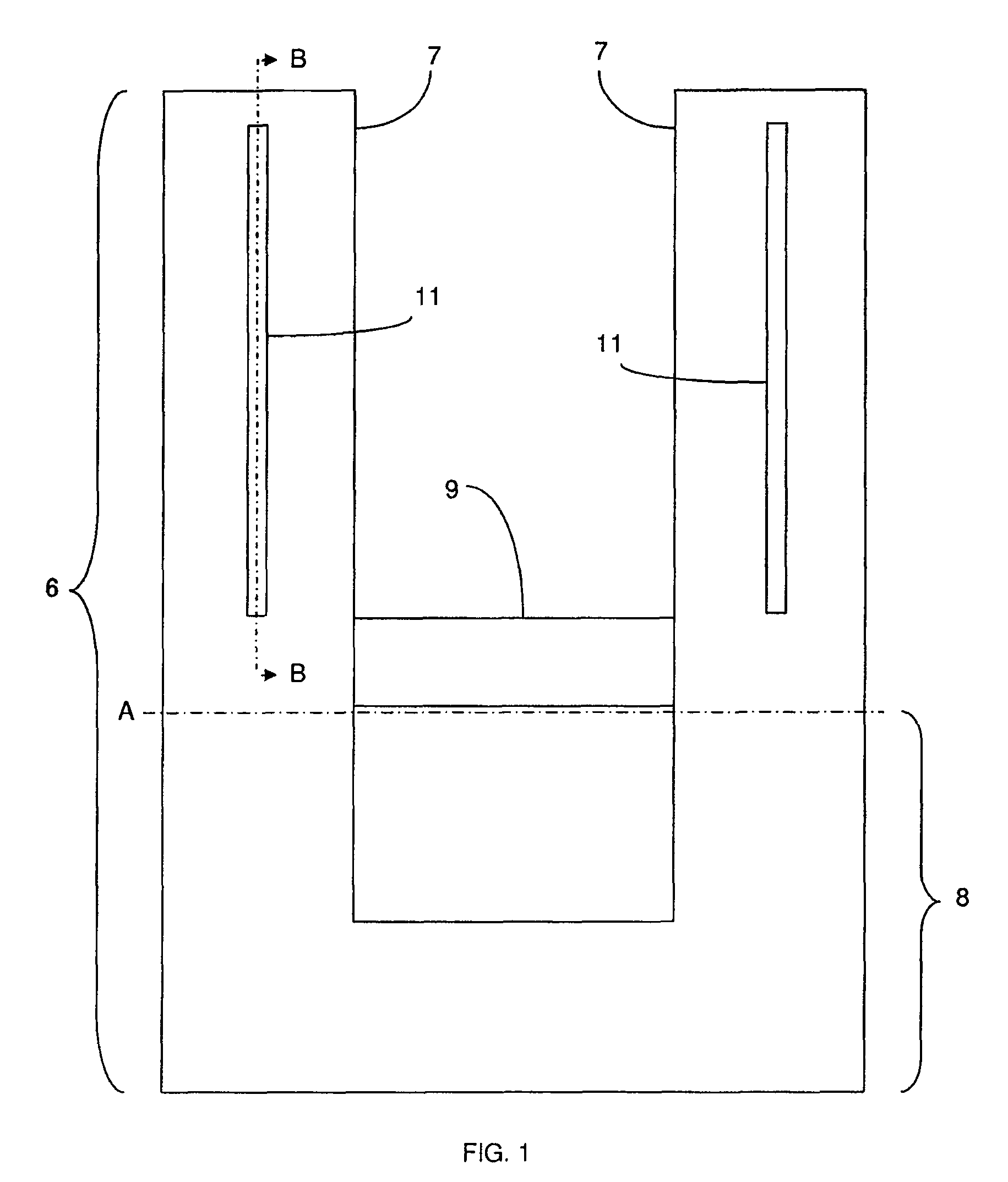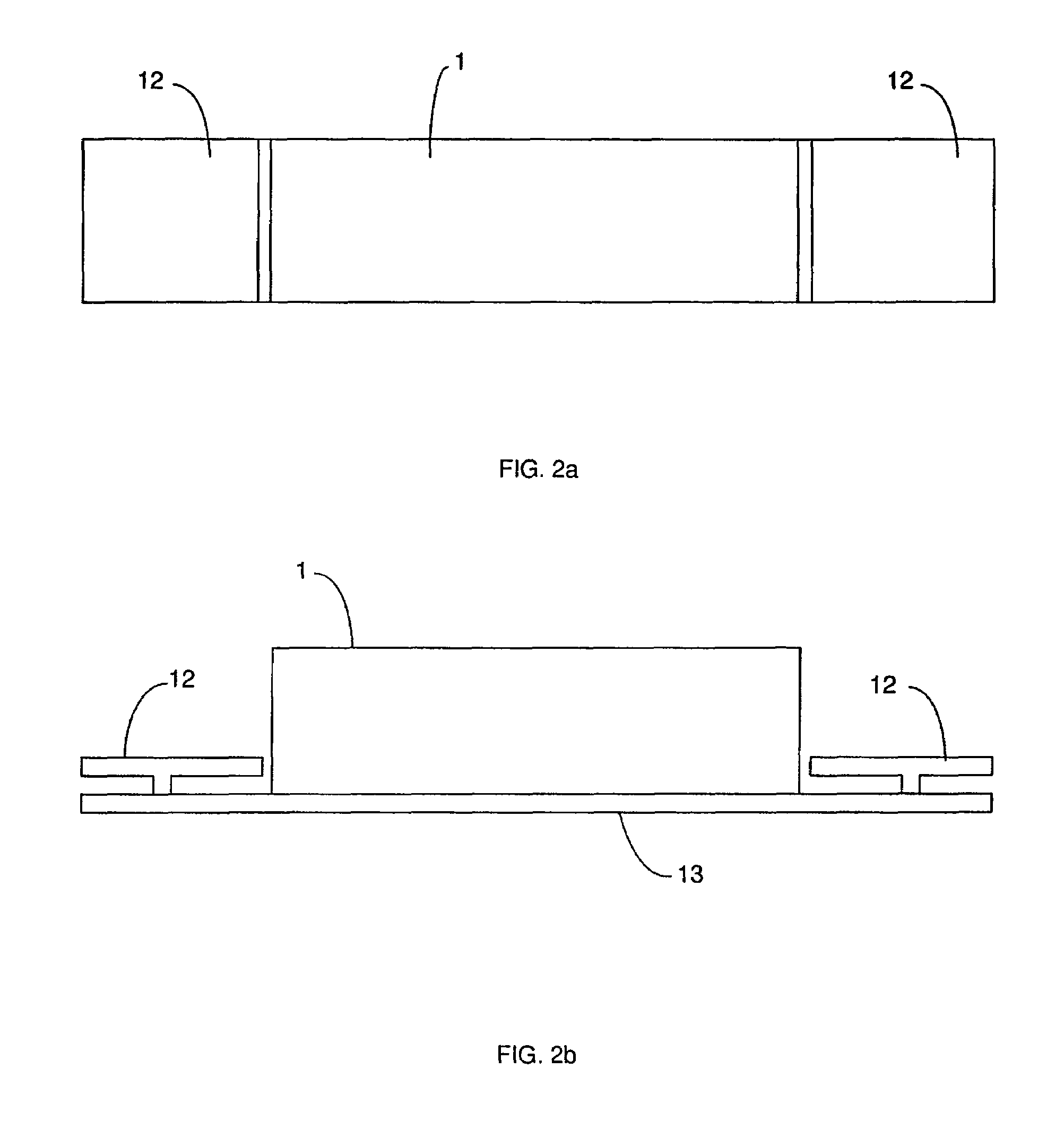Child positioning insert
a positioning insert and infant technology, applied in the field of infant and child safety devices, can solve the problems of pencil-sized airway, infant at risk of suffocation, oxygen desaturation episodes, preterm and term infants at risk of airway compromise, etc., to prevent slouching or shifting of infants, restrict airway, and prevent slouching in the seat
- Summary
- Abstract
- Description
- Claims
- Application Information
AI Technical Summary
Benefits of technology
Problems solved by technology
Method used
Image
Examples
Embodiment Construction
[0044]FIGS. 1-7 and 10-12 illustrate the present invention, designated generally as 10, which is used to position an infant in an infant seat where excess space in the infant seat poses the danger of compromising the infant's breathing airway. Referring to FIG. 1, a frame 6 is U-shaped and forms the core of the insert 10. The frame 6 may be any non-toxic and inexpensive material, such as rubber, medium-density fibreboard, cardboard, vinyl, polyvinyl chloride, or other polymers. The frame 6 may be rigid or flexible, but is preferably flexible to best conform to the surface on which it is placed. Preferably, the frame 6 is a single, planar piece made of rubber, which comprises two columns 7 and a base 8. The frame 6 may be sufficiently flexible that a natural bend occurs where the columns 7 meet the base 8, shown by line A in FIG. 1, allowing the insert 10 to lay flat or to bend to conform to the incline angle of any seat. When flat, the columns 7 and base 8 are substantially coplanar...
PUM
 Login to View More
Login to View More Abstract
Description
Claims
Application Information
 Login to View More
Login to View More - R&D
- Intellectual Property
- Life Sciences
- Materials
- Tech Scout
- Unparalleled Data Quality
- Higher Quality Content
- 60% Fewer Hallucinations
Browse by: Latest US Patents, China's latest patents, Technical Efficacy Thesaurus, Application Domain, Technology Topic, Popular Technical Reports.
© 2025 PatSnap. All rights reserved.Legal|Privacy policy|Modern Slavery Act Transparency Statement|Sitemap|About US| Contact US: help@patsnap.com



